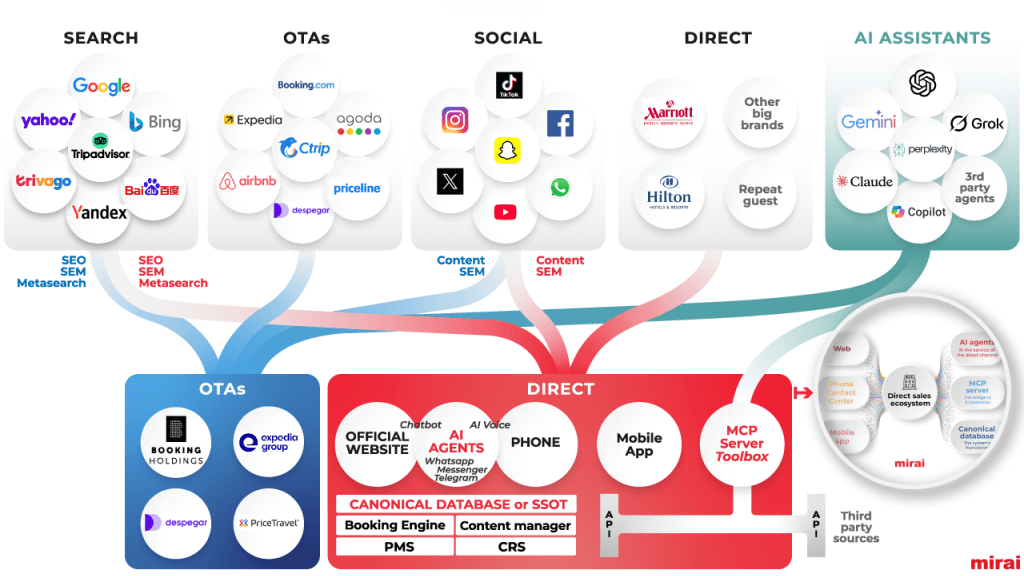
The traditional approach to decision-making faces a new challenge. The data generated by modern hotel operations – from booking patterns and guest preferences to room occupancy rates and ancillary revenue streams – is often scattered across various siloed systems. This fragmentation makes it challenging to get a complete picture of the hotel’s performance and understand the complex factors influencing revenue.
NB: This is an article from Demand Calendar
While some hoteliers remain skeptical, clinging to their tried-and-true methods, a growing number recognize the power of data to unlock new insights and drive better decision-making. They’re beginning to see that data can not only validate their instincts but also reveal hidden opportunities, optimize operations, and, ultimately, maximize revenue.
Transitioning from intuition to data isn’t always easy, but it’s becoming increasingly essential. In the following sections, we’ll explore how Total Revenue Management (TRM) leverages data to transform every aspect of hotel operations, from pricing and inventory management to marketing and guest experience.
Key Data Points for Total Revenue Optimization
To truly understand the factors driving your hotel’s revenue, you must gather and analyze data from multiple sources. This data falls into three main categories:
Historical Data: The Foundation of Revenue Optimization
Your hotel’s historical data is a goldmine of information, revealing the intricate details of your past performance and guest behavior. Collecting comprehensive transactional data from all your siloed systems is crucial to fully leverage this data. This includes:
- Property Management System (PMS):
- Reservations: Capture every booking, modification, and cancellation to understand booking patterns, lead times, and cancellation trends.
- Financial Transactions: Record all guest payments, including room charges, incidentals, and taxes, to analyze spending habits and revenue per booking.
- Operational Transactions: Track check-ins, check-outs, and room cleaning events to evaluate operational efficiency and identify bottlenecks.
- Point of Sale (POS) Systems:
- Reservations: Integrate restaurant and spa bookings to understand guest preferences and cross-selling opportunities.
- Orders and Payments: Record every item ordered and payment made to analyze revenue per customer, popular menu items, and peak dining times.
Beyond averages, it’s crucial to understand the distribution and spread of your data. For example, knowing that your average daily rate (ADR) is $300 doesn’t tell you whether most guests paid around that price or if you have a wide range of rates from $100 to $500. Analyzing the spread of your rates allows you to identify:
- Price Sensitivity: Determine how price changes affect booking volume.
- Rate Floors: Identify the lowest rates that are still profitable.
- Upselling Opportunities: Spot potential to encourage guests to book higher-priced rooms or packages.
- Market Segmentation: Understand which guest segments will pay premium prices and tailor your offerings accordingly.
By consolidating this granular transactional data, you gain a deeper understanding of your hotel’s revenue drivers than you ever could from just looking at averages. This knowledge empowers you to make strategic pricing, promotions, and inventory management decisions, maximizing your total revenue and profitability.
Real-Time Data: The Pulse of Your Hotel’s Future Outlook
Real-time data is your crystal ball, offering a glimpse into your hotel’s future performance. By continuously monitoring key metrics, you can validate your forecasts, identify emerging trends, and make timely adjustments to your revenue strategy.




